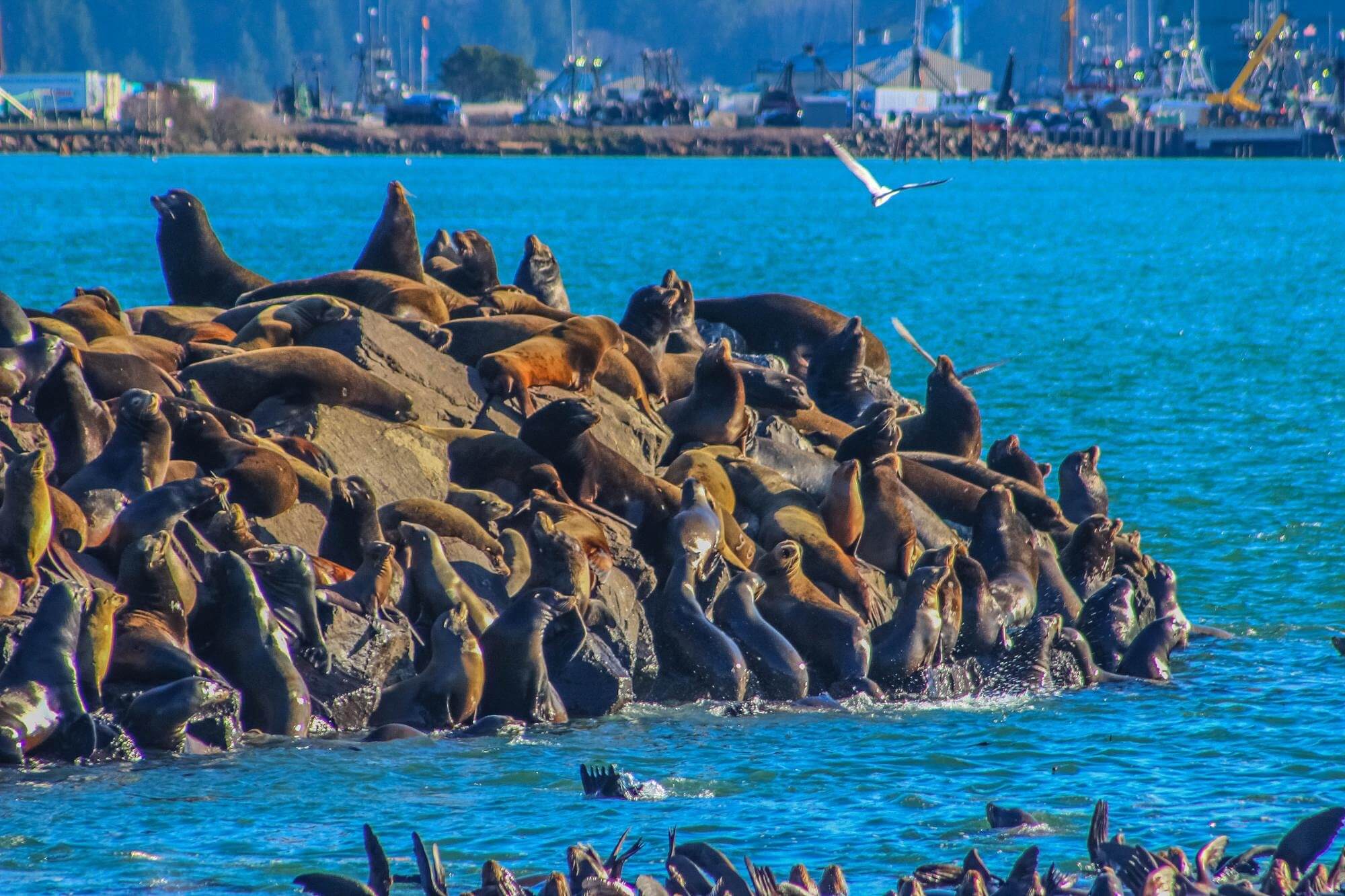We vacationed in Florida. We got bitten. A lot. But not by mosquitos – THOSE we could see, hear and squish. No- our invisible enemy was the Noseeum, also known as the “Biting Midge” or “Sandfly,” or, to give it its official name, the “Ceratopogonidae, of the Order Diptera.” Having recovered our skin, sanity and nerves, we decided to investigate exactly:
- What a noseeum is
- Why the noseeums love Florida as much as we do
- What others can do to prevent them from showing up and spoiling their next fishing trip or family picnic.
What Are Noseeums?
Noseeums (also written no-see-um and no see um) are tiny, biting bugs known by a plethora of different names: sand flies, sand gnats, granny nippers, biting midges, punkies and chitras. Unlike the “sand flea,” which can only jump as high as your legs for its brunch, noseeums have wings, which means they can reach any part of your body.
Noseeums are often just as much a pest as mosquitoes, perhaps more so as, unless they are swarming or actually sucking on you, they are really hard to see. In short, they are the bane of outdoor get-togethers, can make a fishing trip intolerable, and can easily devastate your camping vacation.

What Do Noseeums Look Like?
Noseeum adults are only around 0.03 inches long, about as small as the point on a sharpened pencil, making them nearly invisible unless they’ve just sucked up their bodyweight in nectar or blood, or unless they’re flying in a swarm – in which case, back up and get the hell out of Dodge! Noseeums in Florida vary in appearance and can be yellow-headed, black-spotted or gray. Up close, they look like tiny houseflies. The tell-tale marker between types is the tiny hairs covering their wings, while their miniscule larvae resemble small, cream-colored caterpillars.
Where Do They Live?
Noseeums are typically found in Florida and in humid, tropical areas like the Caribbean. They like to live and breed in muddy or swampy ground and are most noticeable during warmer months, near water sources, in damp, sandy soil or soil containing high levels of manure. In Florida (as we discovered from our own painful experience), noseeum season is June and July!
Interestingly, there are more than 4000 species of noseeums globally, with more than 600 of those found in North America. There are 47 species of noseeums in Florida alone, seven of which are declared pests to the people that live or vacation there.

Are They Dangerous?

While they are definitely a very, very annoying pest, noseeums are not generally considered as spreaders of those pathogens that cause human disease in the United States. That said, they have been found to infect livestock and wild mammals such as deer with viruses that lead to blue tongue and epizootic hemorrhagic disease. In some countries, these diseases can lose farmers millions of dollars in livestock production.
Why Do Noseeums Bite?
Both male and female noseeums feed on plant nectar and other sweet-tasting juices, and while this is enough for the males, the females, like the female mosquito, also (often primarily) feed on blood, which provides them with the proteins they need to produce eggs. Female noseeums will aim for humans, pets, livestock, wild animals and birds with equal bloodlust!
The bites are particularly painful, as the flying ladies use a scissor-like mouth to cut open the skin, unlike mosquitos, which stick in a “straw” and suck. Then, to keep the blood flowing, Mrs Noseeum will secrete an anticoagulant. This secretion can result in a burning sensation, followed by an itchy red welt that can grow to up to two-inches wide if you are allergic.
Noseeums usually feed around dusk and dawn, rarely during daytime hours.
The Life Of A Noseeum
Female noseeums need blood protein to produce eggs, which they will lay on a moist surface, such as in a tree hollow, in wet sand, or in muddy, marshy areas such as those found in abundance in Florida(!).
Noseeums experience life in four stages, and an adult noseeum can lay hundreds of eggs in its lifetime. Eggs tend to hatch within a week of being laid, followed by the larval stage, which can last two weeks to one year (this being entirely dependent on the species, the surrounding environment, and the region in which they popped out of their egg). Next comes the pupal stage, lasting up to three days, and then the stage we like least: wing-boosted, blood-thirsty adulthood which can go on for anywhere between two and seven weeks. And then it starts again…

How To Treat Noseeum Bites
While you might not feel her land, you will surely feel her bite! Any bit of exposed skin will do, though they seem to prefer the back of necks and knees. Bites usually look like a small red dot, and it will likely burn or itch, and will usually last longer than a mosquito bite due to the violent nature of extraction (“scissors,” not a “straw” – see above!).
First, gently wash the bite with warm water and soap to reduce irritation from the bug’s anticoagulant secretion, and to reduce the risk of infection.

Don’t scratch! If you do, you might break the surface of your skin, which can lead to infection. Instead, grab some ice or a cold compress to put on the bites for 10 minutes of numbing pain relief. If you find yourself still fighting the urge to scratch, apply an over-the-counter anti-itch steroid or antihistamine cream, or mix up some baking soda with vinegar or witch hazel. Take an oral analgesic or allergy medication if the pain and itching is too much for you, and if you have any trouble breathing, swallowing, or if you see a rash or other sign of infection, seek immediate medical attention.

To discourage the pesky noseeum females from picking you for their next meal, try a well-recommended insect repellent containing DEET, or one marked specifically for use against noseeums, such as Burt’s Bees Herbal Insect Repellent, or our favorite – Deep Woods Off.
How To Get Rid Of No See Ums
As we wrote above, noseeums tend to seek out their food (you) at dawn or dusk in warmer months, so simply avoiding their habitats at such times is a prevention in itself. There are a few other things you can do to lessen your risk of being bitten, though.
Cover up – pick long sleeves and trousers. Consider investing in a hat with “noseeum netting” to protect your neck, or apply the above recommended repellant to exposed skin – being sure to do so correctly.
Like many bugs, noseeums are attracted to light, so turning off the porch lights, especially near open doors and windows, can discourage them from popping in for dinner.

The tiny noseeums tend to be weak fliers, and so a ceiling or other type of fan can work to keep them at bay. Having your AC on cold will also discourage them, as they prefer humid climes – so try that if you don’t mind upping your electricity bill!
Carbon dioxide-baited traps are also popular these days. Noseeums use Co2 as a signal to find us (their dinner), and the trap works to catch them before they get to us by drawing them close and sucking them in – and it’s also effective against mosquitoes!
If you’re camping, be sure to do so in a tent equipped with “biting midge screening,” and for RVs, think about installing a screen with weave even tighter than the standard 16-mesh over your doors and windows.
Try combining the above methods to reduce the noseeums hanging around and biting you.
The Takeaway
While a small price to pay for 75 degree temperatures and a guaranteed daily dose of sunshine, noseeums can be a real pain. Avoid them by choosing to vacation in tropical environments in the cooler months (either side of May and October). And if summer is your only option, be sure to generously and correctly apply that bug repellent before you step out the door!







